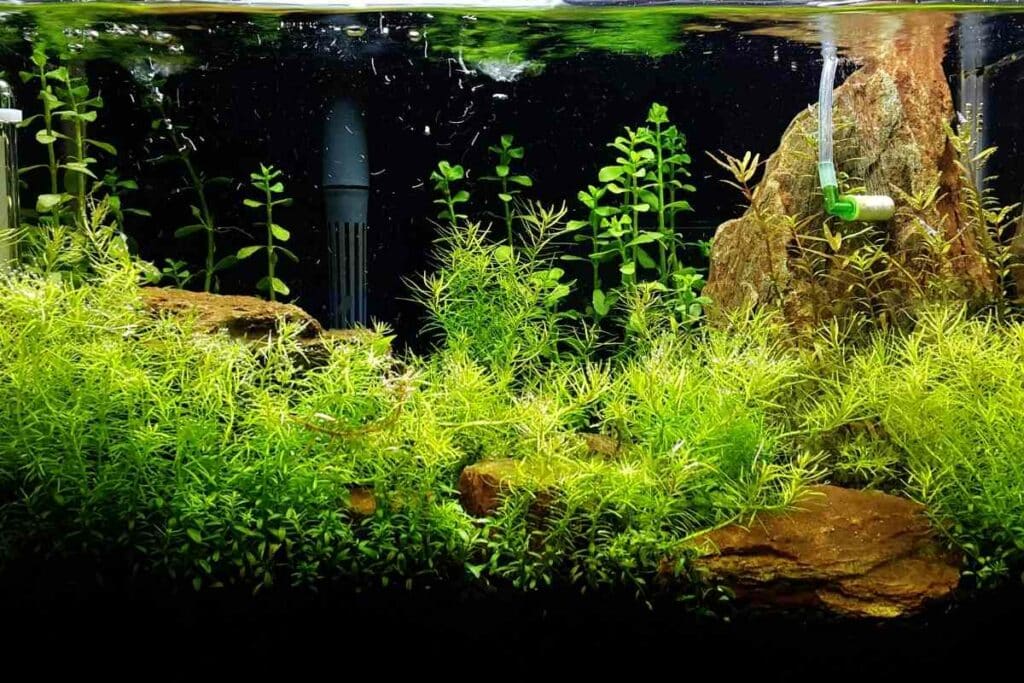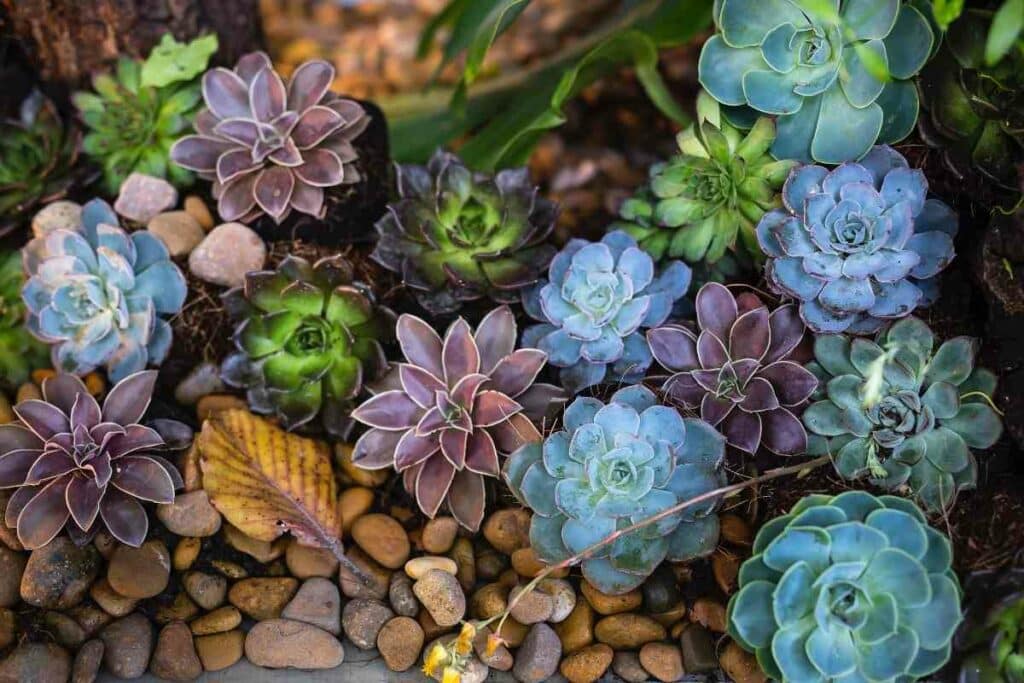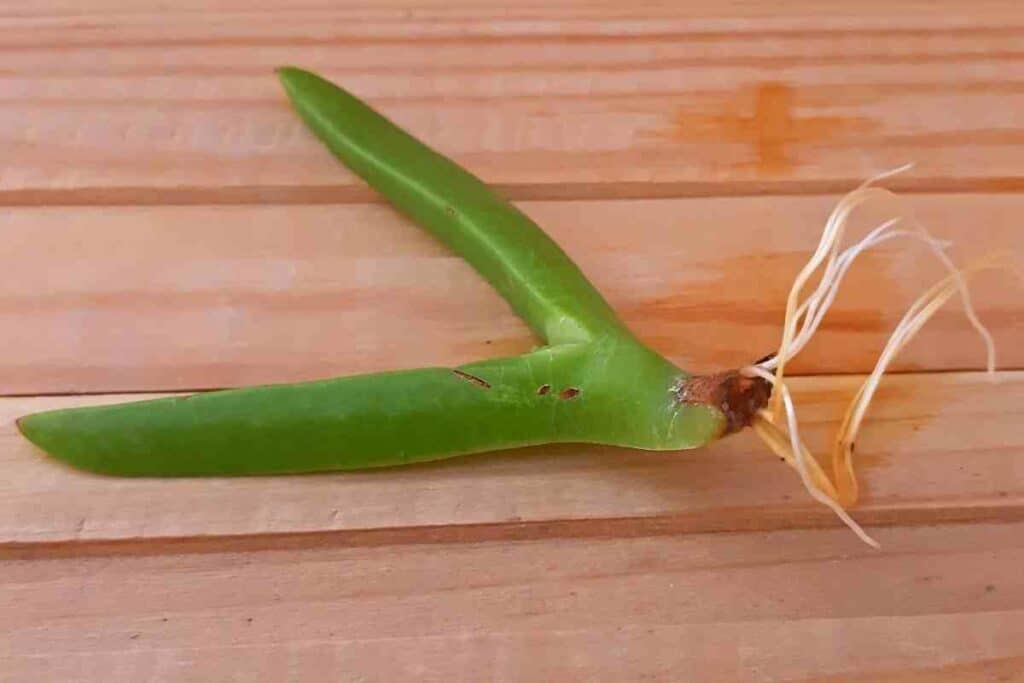If you are a budding Takashi Amano, the idea of putting succulents in a fish tank with fish sounds amazing.
After all, this diverse family of vividly colored, fleshy-leaved plants that have weird and zany shapes could be an eye-catching addition to an other-worldly aquatic display.

Unfortunately as terrestrial plants, even with the best conditions, your regular houseplant succulents just aren’t going to survive immersed in a fish tank.
However, if you are looking to be creative with these characterful plants, we have some great ideas for tank projects and semi-aquatic succulent plants that could be great for the succulent look underwater.
In this article, we’ll get the bottom of succulents in the fish tanks.
Can you grow succulents immersed in water?
With thousands of succulent varieties in the world, it’s no surprise that aquascapers would want to cultivate these thick-leaved beautiful plants immersed in a fish tank.
But terrestrial, non-aquatic succulents will struggle to survive if continually immersed in a tank.
Here’s why.
Succulents are xerophilic
Succulents are dry-loving plants known as xerophiles.

They are specially adapted to live in environments that have a very low availability of water.
Hailing from deserts, wildernesses, and other arid regions in Africa, the Americas, Asia, and Australasia succulents are equipped with fleshy leaves with a thick cuticle to store water meaning that they can survive on very little water.
Too much water usually overwhelms succulents, causing them to swell and quickly rot.
Transplanted succulents have terrestrial roots
Though succulents can be grown using hydroponic methods, you can’t just take a soil-growing succulent and immerse it in your aquarium substrate.
The root system of the succulent is not adapted to growing in water.
The roots will not be able to obtain adequate oxygen and nutrients from the water.
In This Situation – Immersed roots will quickly rot and the plant will die. Propagating a cutting from a succulent may have some success as the new roots develop underwater.
You may have some success cultivating semi-aquatic succulents underwater
If you are set on aquascaping with succulents, you may have more success in sourcing a rare semi-aquatic variety than trying to submerge common succulent species.
The swamp-dwelling Crassulas are a good choice
There are a couple of swamp-dwelling succulents that some aquascapers have had success with establishing underwater.

Crassula helmsii or swamp stonecrop is a hardy semi-terrestrial succulent that hails from Australia and New Zealand:
- Swamp stonecrop loves water and thrives by carpeting the muddy banks of ponds where it even becomes submerged with elongated stems and fleshy needle-shaped leaves.
- Crassula helmsii has been cultivated as a cool freshwater aquarium plant. Once it establishes itself, it grows aggressively, so it will need to be controlled with pruning. When emersed, it will flower.
It is extremely invasive and has spread across the world, but has been banned in the UK since 2014.
Crassula aquatica or common pygmyweed is a partially aquatic succulent plant that is found in estuaries in North America.
This summer-flowering annual succulent is relatively rare and has tiny fleshy and pointed succulent leaves.
Growing crassulas in the aquarium
You may become a victim of your own success if you grow crassulas in a cool freshwater tank with liberal oxygen, carbon dioxide, and good light.

A pH of around 5.5 is ideal for succulents with a generous range of between 4.5 and 6.5 according to the British Cactus and Succulent Journal.
These aquascaping basics may be applicable if you are considering experimenting with getting a terrestrial succulent underwater.
You could also try experimenting with growing floating succulents!
Succulents can be water propagated so it is entirely possible to cultivate the succulent floating on the surface with its roots submerged.
Water therapy is becoming popular among succulent lovers as a way to rehydrate a desiccated succulent.
If fed a liquid fertilizer succulents seem to be able to grow and grow once adapted and without the presence of soil bacteria the incidence of rotting is low.
This is a very experimental area of succulent cultivation with water being used to treat and propagate these plants.
Take a look at this smart floating succulent by Give It A Grow.
And of course, you could simply grow your succulents in a fish tank without the water
Growing succulents in a large aquarium tank can make a dramatic display.
You can be incredibly creative by using colored substrates, sand, and stones to create layers that are visible through the glass for added drama.
People are becoming more adept at growing succulents in novel containers without drainage holes.
Some gardeners are upping the ante by creating a stunning display with these terrarium-style arrangements.
How to plant succulents in a fish tank
To plant a glass fish tank with succulents what you need is:
- A fish tank
- Potting material
- Gravel or lava rock
- A selection of succulents

Follow the steps:
- Clean the fish tank.
- Rinse any gravel or lava rock prior to using it to remove any dust and chemicals that may be harmful to the planted succulents.
- Fill the tank with layers of gravel and lava rock. Alternating colors and textures can produce a great visual result.
- Top the gravel and lava rock with a layer of potting material in which the succulents can be planted.
- Arrange and plant your succulents. To plant the succulents remove as much soil as possible from the roots of the plants.
For the terrarium effect, the tank would need to be enclosed with a glass lid to prevent moisture escape, so that you achieve an enclosed ecosystem that waters itself through cycles of evaporation and condensation.
If you keep the fish tank outside, ensure that you bring it in before temperatures fall as the tank could become waterlogged, freeze and shatter in colder weather.
Here’s a great video that outlines the method and shows the sort of results you can achieve:
Aquascaping substrate is actually great for succulents!
Did you know that you can plant your succulents in that colorful aquarium gravel?
It can boost drainage!
Simply mix a handful or two in with your regular potting soil.

If adding aquarium sand or other substrates wash the mixture thoroughly before planting with it as it can contain particles and chemicals that may be harmful to your succulents.
Rounding Up
Succulents are diverse and versatile plants that lend themselves to a wide range of projects.
People are definitely learning lots about what can be achieved with them and they do respond to hydroponic cultivation and propagation.
Underwater cultivation is an experimental project right now, but with the right varieties and decent conditions, you could have a beautiful succulent that can swim with the fish!
